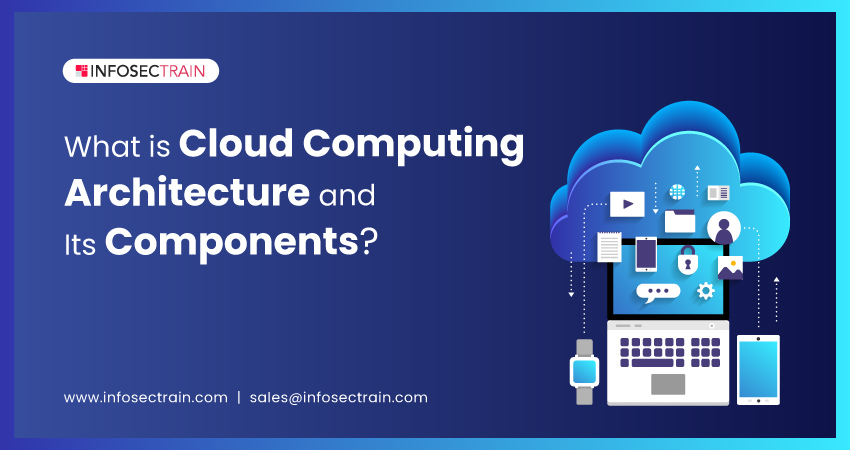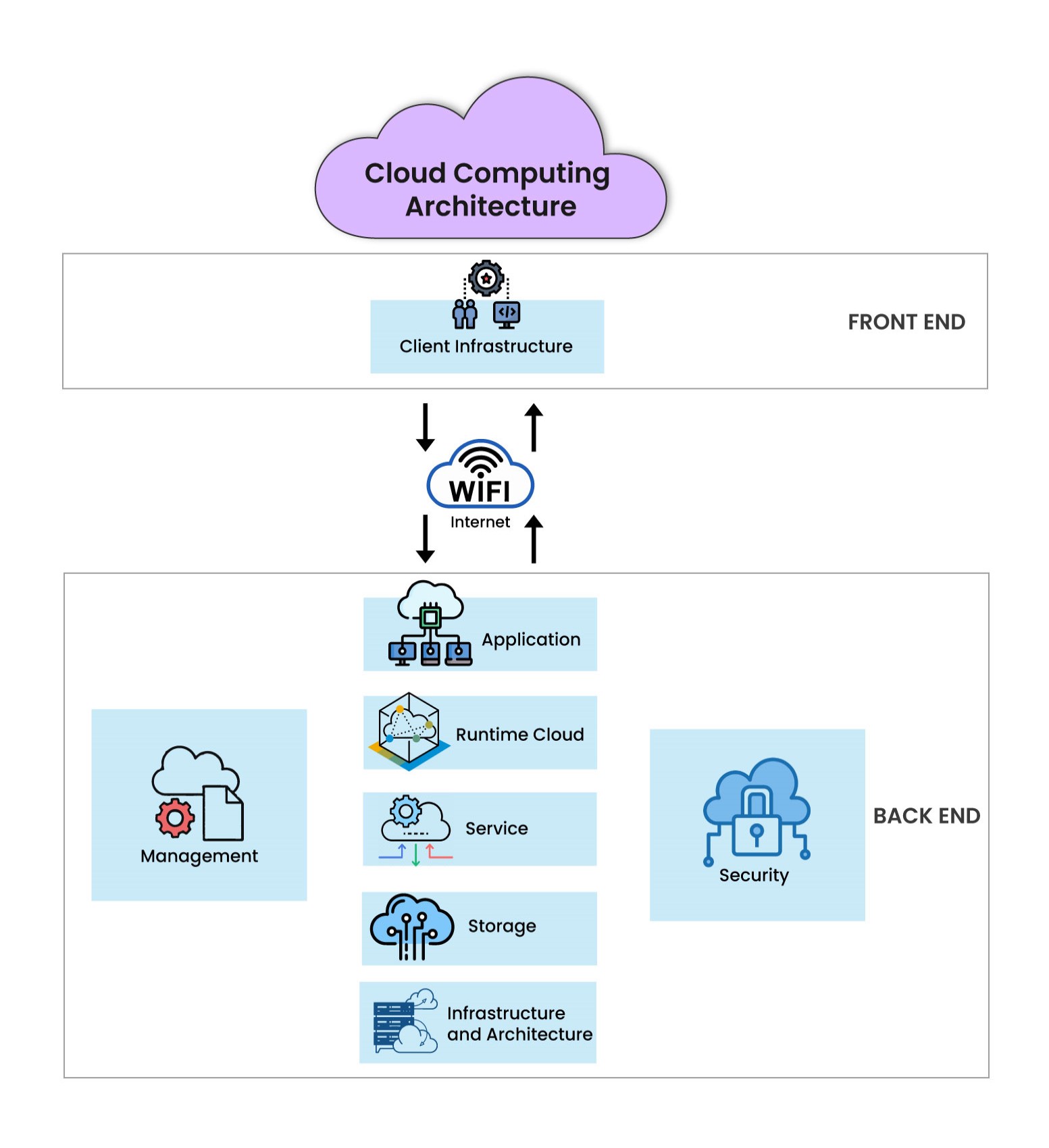What is Cloud Computing Architecture and Its Components?
The term “cloud computing” refers to the provisioning of network-accessible resources or services on demand, such as storage, databases, software, analytics, and other platforms. Cloud computing technology is used by businesses of all sizes to store their data in the cloud, which can be accessed from any area at any time via an internet connection. This article presents an overview of cloud computing architecture and its components.

What is Cloud Computing Architecture?
Cloud computing architecture is a hybrid design that combines Service Oriented Architecture (SOA) and Event-Driven Architecture (EDA). It refers to various components and subcomponents that work together to create the system’s overall architecture. It offers higher bandwidth to its clients, due to which stored data in the cloud can be accessed from wherever they are in the world at any time. It allows businesses to lessen or eliminate their dependency on servers, storage, and networking infrastructure hosted on their own premises.
The architecture of cloud computing consists of two essential parts:
- Front End
- Back End

Front-End Cloud Architecture: The front-end cloud architecture is used by the user’s side, which consists of user-side applications and interfaces. These components are required to gain access to cloud computing services. It also includes components like local networks, web browsers (such as Mozilla Firefox, Google Chrome, Internet Explorer, Opera, and so on), mobile devices, and web applications (such as Gmail, Yahoo, etc.). The front-end architecture interacts with the back end via the networks and sends requests through the middleware.
Back-End Cloud Architecture: The back-end cloud architecture is used by the cloud service provider, who handles and controls all the resources necessary to provide cloud services. It is a vital element of the overall cloud computing architecture since it enhances the front end’s functionality and also protects the cloud data. It includes massive data storage, deployment models, virtual machines, applications, servers, security measures, etc.
Components of Cloud Computing Architecture
The cloud computing architecture includes the following components:
1. Client Infrastructure: It is a front-end cloud computing architecture component that delivers a Graphical User Interface (GUI) for users to communicate with the cloud. It includes the applications and user interfaces (such as Gmail, Google Docs, Asana, etc.) required for cloud-based services.
2. Application: It is a component of back-end cloud computing architecture. It can be any software or platform that a user wants to access. It provides services in the back end that allow users to access their data in accordance with the requests and requirements.
3. Service: It is also a component of back-end cloud computing architecture, which manages each and every operation that runs on the cloud computing platform. It manages the different types of services that users can access based on their specific requirements. There are three distinct categories of services in cloud computing:
- Software-as-a-Services (SaaS): SaaS is a cloud application service. It runs directly through a web browser; therefore, installing and downloading the application is unnecessary.
Examples: Dropbox, Google Apps, Slack, Hubspot, etc.
- Platform-as-a-Service (PaaS): PaaS is a cloud platform service. It provides developers with a platform to create, implement, and manage applications without having to worry about the underlying infrastructure. It offers a ready-to-use development environment, including tools, libraries, and runtime, simplifying application development and deployment.
Examples: Google App Engine, AWS Elastic Beanstalk, etc.
- Infrastructure-as-a-Service (IaaS): IaaS is a cloud infrastructure service. It is an essential component of cloud architecture that manages the application data, runtime environment, and middleware.
Examples: Amazon EC2, Google Compute Engine, etc.
4. Runtime Cloud: It provides virtual machines an environment for executing and running programs at the same time. In other words, it performs similarly to a cloud-based operating system that uses virtualization technologies to execute services, enabling multiple run times on the same server.
5. Storage: It is a significant component of back-end architecture that provides flexible and scalable cloud storage services. These services are used to store and manage data. Several users can access the data simultaneously within the cloud storage system.
Examples: Microsoft Azure storage, Amazon S3, Oracle cloud storage, etc.
6. Infrastructure: It is also a back-end architecture component that provides services on three levels: the host, network, and application. It comprises software and hardware components such as network devices, storage, servers, virtualization, and other resources.
7. Management: It is also a back-end architecture component that aids in managing back-end components, including services, applications, storage, runtime clouds, cloud infrastructure, and other security-related issues. It establishes the coordination between the front-end and back-end and simultaneously executes several cloud environment functions.
8. Security: It is an integral and crucial component at both the front-end and the back-end of a cloud computing architecture. It allows virtual firewalls, which are essential components of cloud security for preventing data loss. It implements different security measures in the back end to secure cloud systems, applications, IPs, files, infrastructure, services, and resources.
9. Internet: It serves as a medium or bridge that enables you to connect the front-end and back-end components so they can interact and communicate with each other.
Cloud Computing with InfosecTrain
InfosecTrain provides a wide range of cybersecurity, cloud computing, and cloud security certification training courses that cover all the skills necessary to enhance your understanding of cloud computing. If you want to learn more about cloud computing architecture, check out InfosecTrain’s CompTIA Cloud+ certification training course. The course will provide you an extensive knowledge of cloud computing architecture and design, as well as cloud services, security, and other related topics. We offer adaptable instructor-led training courses with certified and skilled trainers to meet individual needs.







 1800-843-7890 (India)
1800-843-7890 (India)